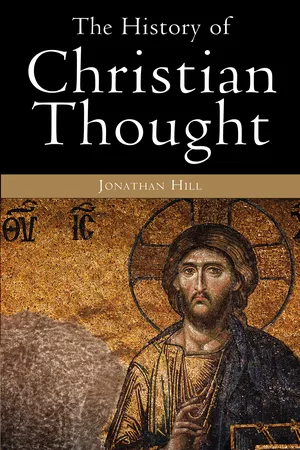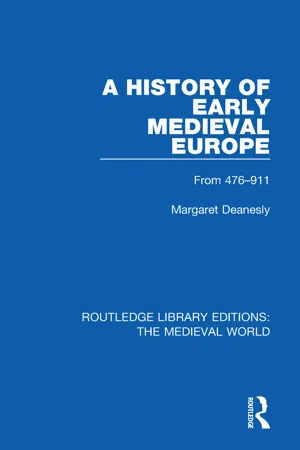Byzantine Empire
The Byzantine Empire, also known as the Eastern Roman Empire, was a continuation of the Roman Empire in the eastern Mediterranean. It was a powerful civilization that preserved and transmitted classical Greek and Roman knowledge, art, and culture. The empire's capital, Constantinople, was a center of trade, wealth, and intellectual pursuits for over a thousand years.
5 Key excerpts on "Byzantine Empire"
- eBook - ePub
- Jonathan Hill(Author)
- 2013(Publication Date)
- Lion Books(Publisher)
...Part 2 The Byzantine Empire As Rome fell to the barbarian hordes, the western half of the empire withered away. But Constantinople, the New Rome, held firm. The Christian city of Constantine, also known by its ancient name of Byzantium, was now the sole capital of the eastern half of the Roman empire – what became known as the Byzantine Empire. For 1,000 years, the Byzantine Empire stood fast. Here, scholars and theologians continued to write and argue, sifting through the scriptures and the writings of the Church Fathers, and producing ever more sophisticated reflections upon them. The Orthodox Church, more than any other Christian denomination, has always set great store by tradition. This means that the Byzantine theologians tended to be less original than the Fathers they studied, and less daring than their Western medieval contemporaries. They are certainly not so well known in the West. But for beauty of writing and profundity of spirituality, few could match them. Byzantium In Byzantium, at last, Constantine’s dream of a perfect union of Church and State was realized. The inhabitants of the city believed that they were living in a foretaste of the heavenly Jerusalem, so pervasive was Christianity in all spheres of life. The magnificence of the city set the seal on its status as an icon of heaven itself. It had a distinctive architectural style, shown to great effect in buildings like the immense cathedral of Hagia Sophia, built by Emperor Justinian in the early 6th century, and which required 625 priests simply to keep it operational. Throughout the Middle Ages, Constantinople was the largest and most glorious city in Europe. The splendour of the city was matched by the sophistication of its scholarship, which kept alive the flame of antiquity. The refined elegance of its inhabitants was surpassed only by the complexity of their political system, which revolved around the imperial court...
- John Haldon(Author)
- 2020(Publication Date)
- Routledge(Publisher)
...Introduction The term “Byzantine Empire” refers to the eastern Roman empire from the end of the “late Roman” period in the eastern and central Mediterranean / Balkan region (from the sixth century, therefore) to the fifteenth century, that is to say, from the time when a distinctively East Roman political formation began to evolve with the recognition of the cultural divisions between “Greek East” and “Latin West” in the empire’s political structure, to the fall of Constantinople on 29 May 1453 at the hands of the Ottoman sultan Mehmet II “Fatih”, “the Conqueror”. And although within this long period there were many substantial transformations, the elements of structural continuity are marked enough to permit such a broad chronological definition. “Byzantine” should be understood as the convenient label which it is – a shorthand for “medieval East Roman”, for the Byzantines referred to themselves as Romaioi or Romans, a term which subsumed at once their identity as Orthodox Christians, the Chosen People who, in the eyes of God, had succeeded to the place of the Jews from the time of Christ; and as Romans, the inheritors of a world empire protected and guided by God. From the point of view of the medieval observer, the artificial chronological divisions imposed by modern historians, sometimes for perfectly valid reasons, upon Byzantine history are quite meaningless; and even from the perspective of the modern specialist historian, the divide between late Roman (i.e...
- eBook - ePub
Byzantine Christianity
A Very Brief History
- Averil Cameron(Author)
- 2017(Publication Date)
- SPCK Publishing(Publisher)
...Part 1 THE HISTORY 1 What was Byzantium? Byzantium and the Byzantine Empire are usually associated with Eastern Orthodoxy. However, we need to start by clarifying both these concepts. Byzantium ‘Byzantium’ and ‘the Byzantine Empire’ generally refer to the empire ruled from Constantinople (modern Istanbul) and lasting from the dedication of the city by the Emperor Constantine in ad 330 until its fall to the Ottoman Turks in 1453. But there are some problems here. First, the term ‘Byzantium’ is modern and was not used by the Byzantines themselves (they called themselves Romans). Second, Constantinople was captured by the Fourth Crusade in 1204 and came under Latin rule until 1261, when the exiled Byzantines regained the city and re-established themselves there. Third, although Byzantium was indeed an empire for most of its history and ruled extensive territory, its size varied greatly at different periods. From its height after the wars of the Emperor Justinian in the sixth century, it lost much of its territory in the east as a result of the Arab conquests but recovered and grew again in the tenth to twelfth centuries. After the capture of Constantinople by the Fourth Crusade in 1204, it was reduced to several small enclaves or statelets ruled by various members and branches of the imperial family. The Byzantines from Nicaea recovered the city in 1261 but the territory ruled from Constantinople in its final phase was tiny compared with the empire’s former glory. For 150 years after its foundation, Constantinople was the seat of government of the eastern part of the Roman empire, and there were also Roman emperors ruling in the west...
- eBook - ePub
A History of Early Medieval Europe
From 476-911
- Margaret Deanesley(Author)
- 2019(Publication Date)
- Routledge(Publisher)
...CHAPTER VIII THE FORMATION OF THE EASTERN EMPIRE T O an Englishman today, studying for a moment the foundations of modern Europe, it seems natural to study first the history of the west and the settlements of the invaders. To a Roman citizen of even moderate culture in the fifth century, it would probably have seemed rather that the future of Europe and civilization depended on Constantinople and its fate. Civilization was focussed in the east, not the west: New Rome (and this was the official title of the city) was really Rome herself, planted there by Constantine in the year 330. The Rome of Constantine, it is true, was not the Rome of Augustus: the Roman empire was already, in fact, a Greco-Roman empire long before Constantine; but the fate of the Latin tradition and much else seemed to depend on the survival of ‘New Rome’. Byzantium, the royal city, ‘city of lights’ as a later pope was to call Paris, was, to all who knew, at once the fortress and the capital of Europe: the rest, barbarian fringe. Byzantine history, at least till the Crusades, is not a strand of history adjacent to that of Europe, possibly omissible; it is, in a sense, the central strand of European history. A great English Byzantinist 1 would set the beginning of the Byzantine Empire at the very foundation of the city by Constantine, rather than at its reorganization in the eighth century by the emperor Leo III, after the losses to the Arabs. This was the beginning. All living states grow and change, in answer to the requirements of their environment, and Byzantium became progressively more Hellenistic, more Asiatic even, in the course of her history: but the project for which she was founded remained her aim through the centuries and gave her development continuity. She was never, at any point, ‘orientalized’. Three factors then determined her development, all present in the original concept of Constantine...
- eBook - ePub
- George Finlay(Author)
- 2018(Publication Date)
- Perennial Press(Publisher)
...END OF THE Byzantine Empire ~ SUCH WAS THE TERMINATION OF the Byzantine phase of the Eastern Roman Empire. Many new states were formed from its disjointed members, as had formerly happened at the fall of the Empire of the West. Three of these assumed the rank of empires, and the Belgian Emperor of Constantinople found himself compelled to dispute for the honor of representing the Roman Empire of the East with two Greek sovereigns, who assumed the imperial title at Nicaea and at Trebizond. Most of the European provinces were subjected to a new code of laws, and were forced to adopt new habits and manners. The feudal system was imposed on Greece by its conquerors, and a considerable portion of the Hellenic race never again recovered its independence; but when the power of its feudal princes and of its other masters, the Venetians, the Genoese, and the Knights of St John, declined, it passed under the dominion of the Ottoman Turks. The Greek emperor of Nicaea, even after he had expelled the Belgian emperor from Constantinople, never extended his power over more than a moiety of the Greek nation. The Greek empire of Constantinople was only a counterfeit representation of its Byzantine predecessor, in the same manner as the empire of Charlemagne formed a mere nominal revival of that of Rome. But more instruction would be derived by making the difference in the state of society at the fall of the empires of the East and West, than in tracing analogies which naturally occurred at the dissolution of two states long governed by the same principles of policy and jurisprudence. The task here assumed is confined to a more restricted field...




